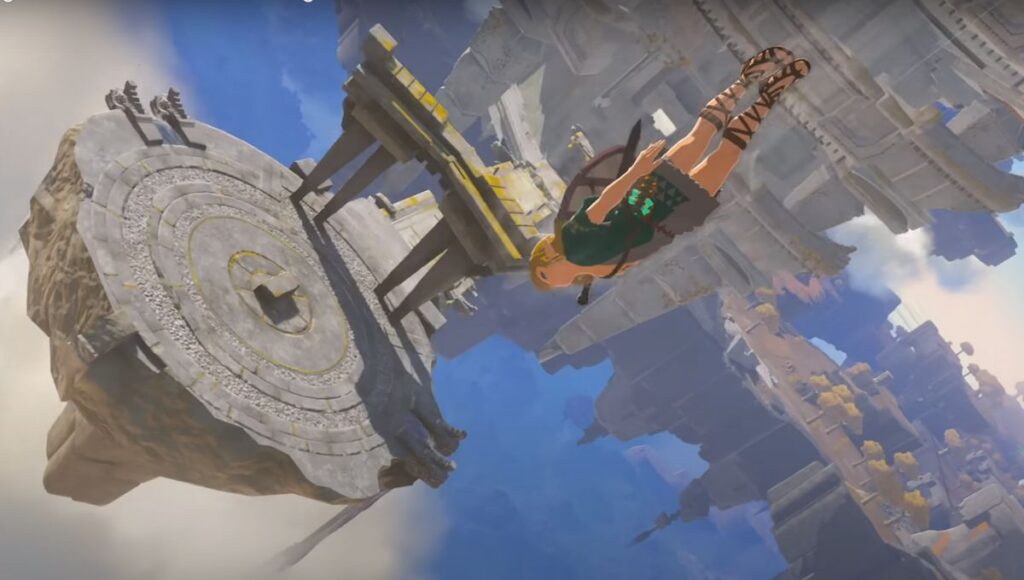The Legend of Zelda series is renowned for its continual innovation in gameplay mechanics across various iterations, setting itself apart from many modern franchises. However, one consistent element throughout numerous Zelda games has been the theme of time travel, prominently featured in titles such as Ocarina of Time, Majora’s Mask, and Oracle of Ages.

Created by: Takashi Tezuka, Shigeru Miyamoto
Creation Year: 1986
Video Games:
- The Legend of Zelda: Four Swords Adventures
- The Legend of Zelda
- The Legend of Zelda: Oracle of Ages
- The Legend of Zelda: Tears of the Kingdom
- The Legend of Zelda: Tri Force Heroes
- The Legend of Zelda: Link’s Awakening
- The Legend of Zelda: Ocarina of Time
- The Legend of Zelda: Phantom Hourglass
- The Legend of Zelda: A Link Between Worlds
- The Legend of Zelda: Twilight Princess
- The Legend of Zelda: Majora’s Mask
- The Legend of Zelda: The Wind Waker
- The Legend of Zelda: Spirit Tracks
- The Legend of Zelda: The Minish Cap
- The Legend of Zelda: A Link to the Past
- The Legend of Zelda: Skyward Sword
- The Legend of Zelda: Breath of the Wild
- The Legend of Zelda: Oracle of Seasons
- Zelda II: The Adventure of Link
A poignant twist on time travel is presented in Tears of the Kingdom, where Zelda transforms into an immortal dragon to safeguard Hyrule, imbuing the narrative with emotional depth. Widely acknowledged as a pioneering and influential franchise in the realm of video games, The Legend of Zelda has consistently strived for innovation rather than resting on its laurels, a departure from the approach of contemporary franchises like Assassin’s Creed or Far Cry.
Even in titles such as Zelda: Breath of the Wild and Tears of the Kingdom, which share similar map layouts and mechanics, the sequel introduces a plethora of fresh gameplay mechanics, many of which are both additive and groundbreaking, not only within the Legend of Zelda series but also within the adventure genre as a whole. Notably, time travel has remained a prominent feature across a surprising number of Zelda entries.
More must-reads:
- March’s PlayStation Plus Games
- AMD’s RDNA 4 GPUs Revealed! Can They Finally Beat Nvidia in Ray Tracing?
- Roblox Fishing Simulator Unveils 2024 Exclusive Rewards
- 10 Most Anticipated Video Games of Recent Times: Gear Up for Epic Adventures!
- Exclusive: Peacemaker & Janet Cage Join Mortal Kombat 1! Click Now for the First Gameplay Trailer!
While Breath of the Wild and Tears of the Kingdom are commendable entries, there is a call for the Legend of Zelda series to embrace a new direction.
The Legend of Zelda: Ocarina of Time, not content with being merely the first 3D Zelda game, introduced players to a narrative deeply intertwined with its titular time travel mechanic. This feature becomes pivotal in the story after players obtain the three Spiritual Stones and access the Temple of Time, where Link is guided to wield the Master Sword to defeat Ganondorf, leading to a time skip of seven years.
The sequel, Majora’s Mask, expands on the time travel concept, making it central to the gameplay as Link endeavors to prevent a cataclysmic event by utilizing his time manipulation abilities.
In Oracle of Ages, the Game Boy Color installment, time travel is a core element of both the narrative and gameplay, facilitated by the Harp of Ages and the ability to traverse between two distinct periods.
Twilight Princess diverges from this trend by incorporating time travel into a brief segment of gameplay, involving the ancient Temple of Time as a dungeon rather than a central narrative device.
Skyward Sword features time travel more prominently, particularly in areas like Lanayru Mine and Lanayru Desert, where Timeshift Stones alter the environment between past and present.
Tears of the Kingdom takes a poignant approach to time travel, with Zelda’s journey spanning millennia as she sacrifices her humanity to protect Hyrule.
The Legend of Zelda series, conceived by Takashi Tezuka and Shigeru Miyamoto in 1986, has evolved across multiple consoles and generations, offering players diverse experiences blending action, exploration, and puzzle-solving.